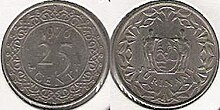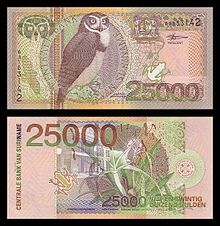
The schilling was the currency of Austria from 1925 to 1938 and from 1945 to 1999, and the circulating currency until 2002. The euro was introduced at a fixed parity of €1 = 13.7603 schilling to replace it. The schilling was divided into 100 groschen.
The dollar has been the currency of The Bahamas since 1966. It is normally abbreviated with the dollar sign $, or alternatively B$ to distinguish it from other dollar-denominated currencies. It is divided into 100 cents.

The Portuguese escudo was the currency of Portugal from May 22, 1911, until the introduction of the euro on January 1, 2002. The escudo was subdivided into 100 centavos. The word escudo derives from the scutum shield.

The Saudi riyal is the currency of Saudi Arabia. It is abbreviated as ر.سSAR, or SR (Saudi Arabian Riyal/Saudi Riyal). It is subdivided into 100 halalas. The currency is pegged to the US dollar at a constant rate of exchange.
The Surinamese dollar has been the currency of Suriname since 2004. It is divided into 100 cent. The Surinamese dollar is normally abbreviated with the dollar sign $, or alternatively Sr$ to distinguish it from other dollar-denominated currencies. In spoken Surinamese Dutch, it is widely referred to by its acronym SRD, with "dollar" generally being understood as meaning the US dollar.
The leone is the currency of Sierra Leone. It is subdivided into 100 cents. As of 1 July 2022, the ISO 4217 code is SLE due to a redenomination of the old leone (SLL) at a rate of SLL 1000 to SLE 1. The leone is abbreviated as Le placed before the amount.
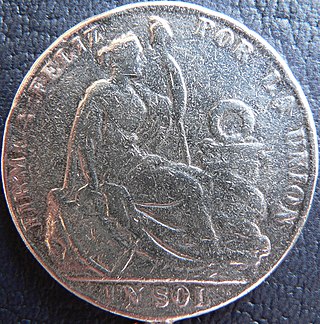
The sol, later sol de oro, was the currency of Peru between 1863 and 1985. It had the ISO 4217 currency code PES. It was subdivided into 10 dineros or 100 centavos. It also had two different superunits over its circulation life, the inca (1881-1882) and later the gold pound, both worth 10 soles.
The Colombian peso is the currency of Colombia. Its ISO 4217 code is COP. The official peso symbol is $, with Col$. also being used to distinguish it from other peso- and dollar-denominated currencies.
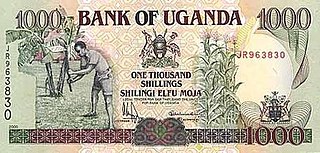
The shilling is the currency of Uganda. Officially divided into cents until 2013, due to substantial inflation the shilling now has no subdivision.

The Guyanese dollar has been the unit of account in Guyana since 29 January 1839. Originally it was intended as a transitional unit to facilitate the changeover from the Dutch guilder system of currency to the British pound sterling system. The Spanish dollar was already prevalent throughout the West Indies in general, and from 1839, the Spanish dollar unit operated in British Guiana in conjunction with British sterling coins at a standard conversion rate of one dollar for every four shillings and twopence. In 1951 the British sterling coinage was replaced with a new decimal coinage which was simultaneously introduced through all the British territories in the Eastern Caribbean. When sterling began to depreciate in the early 1970s, a switch to a US dollar peg became increasingly attractive as an anti-inflationary measure and the Eastern Caribbean Currency Authority made the switch in October 1975. The Guyanese dollar is normally abbreviated with the dollar sign $, or alternatively G$ to distinguish it from other dollar-denominated currencies.

The Belgian franc was the currency of the Kingdom of Belgium from 1832 until 2002 when the Euro was introduced. It was subdivided into 100 subunits, each known as a centiem in Dutch, centime in French or a Centime in German.
The Solomon Islands dollar is the currency of Solomon Islands since 1977. Its symbol is $, with SI$ used to differentiate it from other currencies also using the dollar sign. It is subdivided into 100 cents.
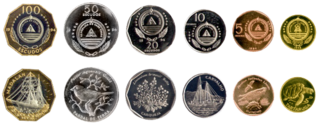
The escudo is the currency of the Republic of Cape Verde. One escudo is subdivided into one hundred centavos.
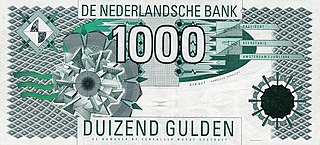
The guilder or florin was the currency of the Netherlands from 1434 until 2002, when it was replaced by the euro.

The Netherlands Antillean guilder is the currency of Curaçao and Sint Maarten, which until 2010 formed the Netherlands Antilles along with Bonaire, Saba, and Sint Eustatius. It is subdivided into 100 cents. The guilder was replaced on 1 January 2011 on the islands of Bonaire, Saba and Sint Eustatius by the United States dollar.
The florin or Aruban guilder is the currency of Aruba. It is subdivided into 100 cents. The florin was introduced in 1986, replacing the Netherlands Antillean guilder at par. The Aruba currency exchange rate for U.S. dollars is Afl 1.77 for cash and Afl 1.78 for traveller’s checks. Most supermarkets and gas stations use the exchange rate of Afl 1.75, while many restaurants and shops use the exchange rate of Afl 1.80.
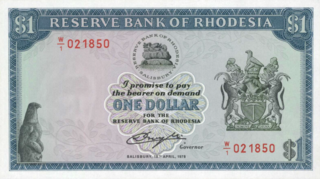
The Rhodesian dollar was the currency of Rhodesia between 1970 and 1980. It was subdivided into 100 cents.

The escudo was the currency of São Tomé and Príncipe between 1914 and 1977. It was equivalent to the Portuguese escudo and subdivided into 100 centavos.

The escudo was the currency of Angola between 1914 and 1928 and again between 1958 and 1977. It was subdivided into 100 centavos with the macuta worth 5 centavos and was equivalent to the Portuguese escudo.
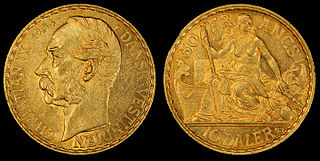
The daler was the currency of the Danish West Indies between 1849 and 1917, and of the United States Virgin Islands between 1917 and 1934.


